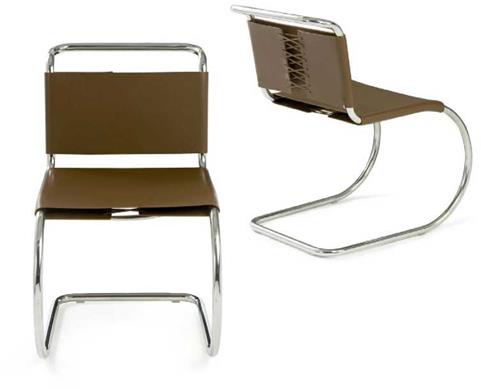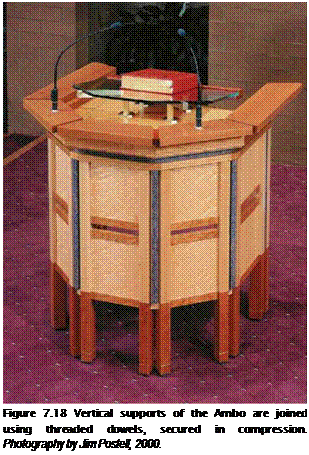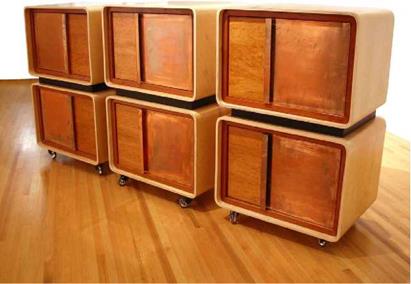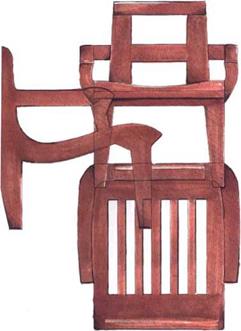All wood species shrink upon drying and expand when the cells hydrate. Wood does not begin to shrink until all "free water" is removed and "bound water" loss begins. Hardwood lumber must have a moisture content of 6 to 12 percent to meet the standard of the National Hardwood Lumber Association (NHLA) grades. Some woods shrink and expand more than others. However, there is a noticeable variation within any species between its tangential and radial shrinkage. Imagine a small slice of a log. The internal and inconsistent stresses in lumber are dependent on how the tree was cut at the mill. Quarter-sawn lumber will expand and contract similarly to plain-sawn lumber, but quarter-sawn lumber is less prone to cupping. As plain-sawn lumber dries, it shrinks much more tangentially, causing it to split more often than quarter-sawn lumber.
It is important that furniture designers and fabricators understand the degree of compatibility between materials that connect to one another and know what precautions must
|

be taken to allow for the relative differential in movement by different materials. In Figure 7.18, an end grain butt joint in the structural supports fabricated with two different woods (maple and cherry) necessitated core drilling twice through the entire length of the composite leg assembly. The different woods were then secured in compression using threaded rods and locking nuts. PVA or epoxy glue with dowels would not have secured the connection well enough, and over time, due to the differential in the dimensional changes of the two species, the joint would have failed.
 Wood is not a homogeneous solid material; consequently, movement that results from changes in relative humidity is not equal in all directions. Shrinkage takes place in every dimension of wood except along the length of the grain. Quarter-sawn lumber will expand and contract, as will plain – sawn lumber, but quarter-sawn lumber tends to move and shrink less than plain-sawn lumber and is less prone to cupping. Plain-sawn lumber has inherently greater internal forces due to its grain and the way in which the wood was cut at the mill. As a general rule, one should avoid gluing wide and long pieces of wood cross-grain to one another (as in a skirt or apron for a table). When it is unavoidable, consider using a mortise and tenon or a slotted mechanical connection to allow for expansive and contractive movement.
Wood is not a homogeneous solid material; consequently, movement that results from changes in relative humidity is not equal in all directions. Shrinkage takes place in every dimension of wood except along the length of the grain. Quarter-sawn lumber will expand and contract, as will plain – sawn lumber, but quarter-sawn lumber tends to move and shrink less than plain-sawn lumber and is less prone to cupping. Plain-sawn lumber has inherently greater internal forces due to its grain and the way in which the wood was cut at the mill. As a general rule, one should avoid gluing wide and long pieces of wood cross-grain to one another (as in a skirt or apron for a table). When it is unavoidable, consider using a mortise and tenon or a slotted mechanical connection to allow for expansive and contractive movement.
|
|
|
|
|
|






